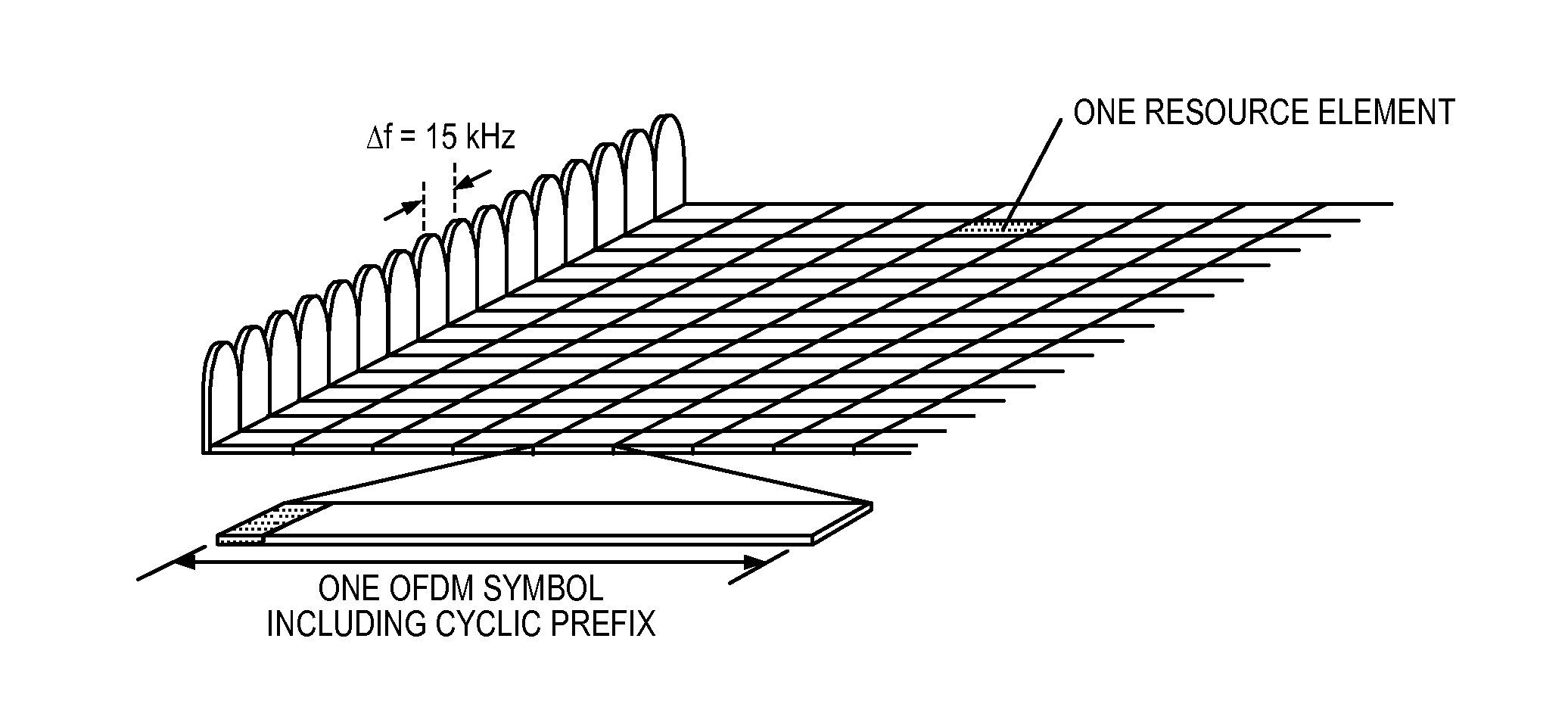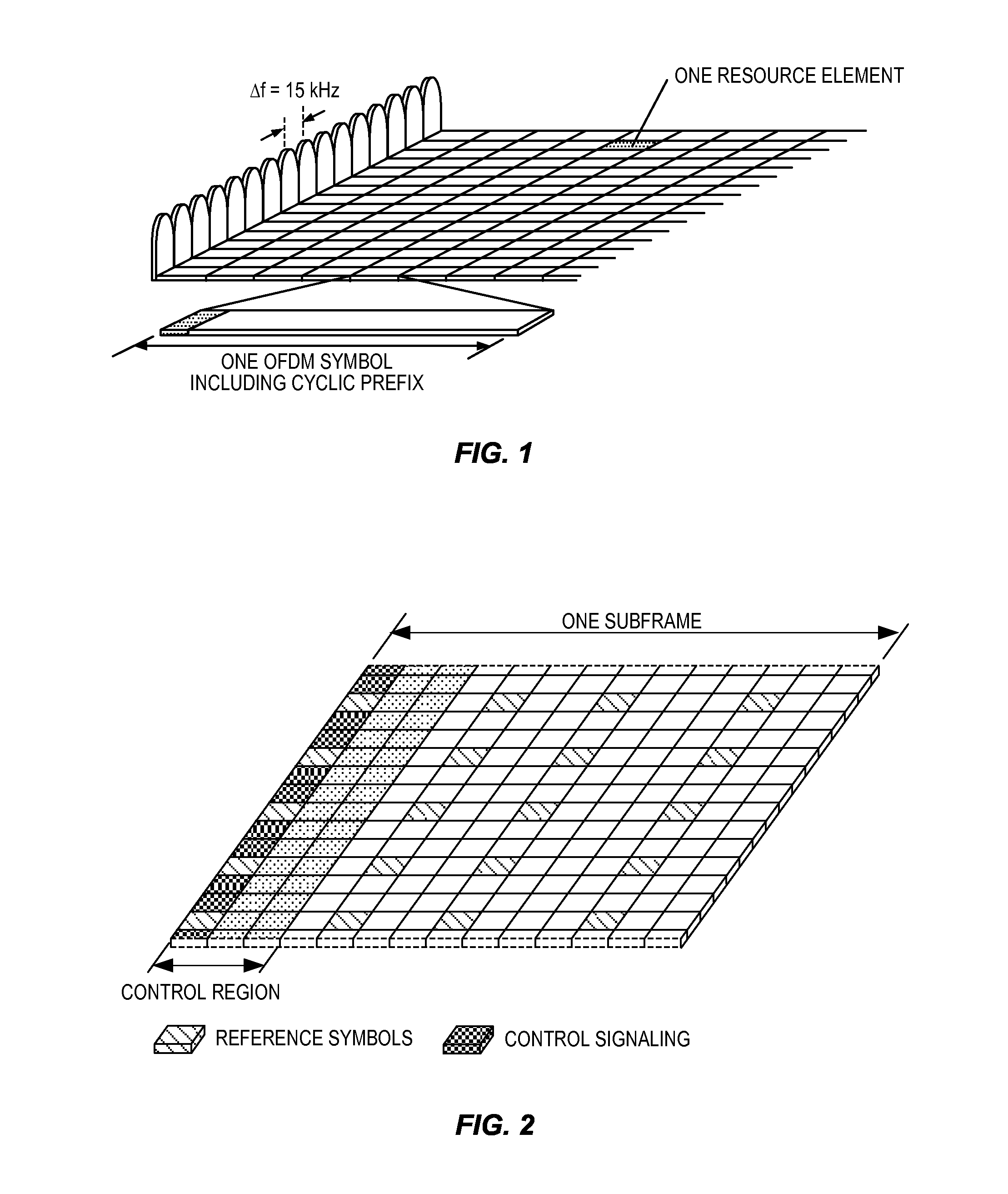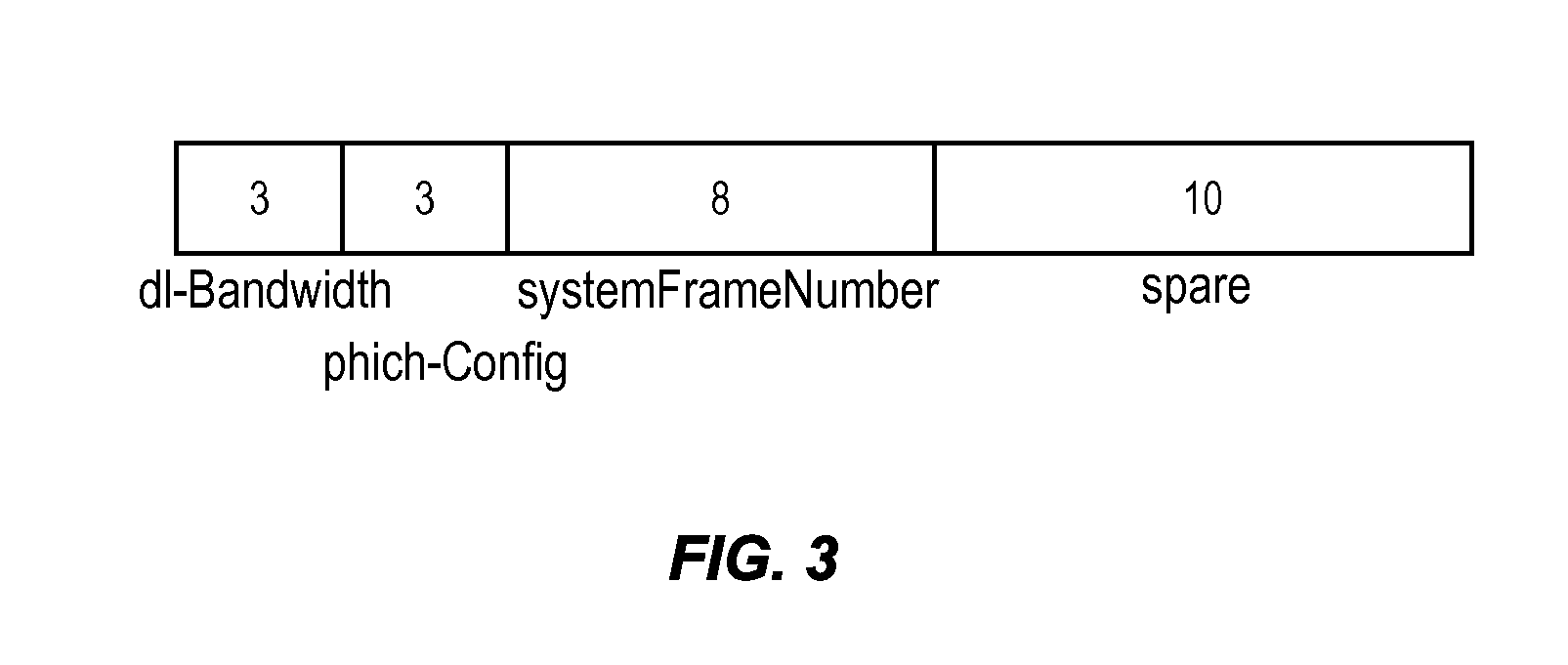Flexible spectrum support in cellular wireless communications
a spectrum support and cellular wireless technology, applied in the field of cellular communication networks, can solve the problems of 7.5 megahertz spectrum block not fully utilizing its spectrum allocation, difficulty in transition, and inability to match spectrum allocations assigned to operators with channel bandwidths supported
- Summary
- Abstract
- Description
- Claims
- Application Information
AI Technical Summary
Benefits of technology
Problems solved by technology
Method used
Image
Examples
third embodiment
[0095]In a third embodiment, the dl-BandwidthAdjustment signals the number of PRBs to be added or subtracted from the standardized bandwidth. That is, the dl-BandwidthAdjustment contains a signed bit to signal addition or subtraction. The bit allocation methods discussed above can be similarly applied.
fourth embodiment
[0096]In a fourth embodiment, dl-BandwidthAdjustment signals the number of PRBs to be applied to either (1) the lower frequency side edge of the standard bandwidth, (2) the higher frequency side edge of the standard bandwidth, or (3) both edges of the standardized bandwidth. The bit allocation methods discussed above can similarly be applied.
[0097]Still further, in some embodiments, the conventional MIB used in LTE Rel-11 and prior LTE releases is modified to carry the new dl-BandwidthAdjustment field. More specifically, in one non-limiting example, the legacy phich-Config field of the MIB is replaced by the new dl-BandwidthAdjustment field as illustrated in FIG. 17A. In another non-limiting example, part of the spare bits of the MIB are allocated to the new dl-BandwidthAdjustment field as illustrated in FIG. 17B. In yet another non-limiting example, the new dl-BandwidthAdjustment field occupies the bit fields of the conventional phich-Config of the MIB and part of the spare bits of...
PUM
 Login to View More
Login to View More Abstract
Description
Claims
Application Information
 Login to View More
Login to View More - R&D
- Intellectual Property
- Life Sciences
- Materials
- Tech Scout
- Unparalleled Data Quality
- Higher Quality Content
- 60% Fewer Hallucinations
Browse by: Latest US Patents, China's latest patents, Technical Efficacy Thesaurus, Application Domain, Technology Topic, Popular Technical Reports.
© 2025 PatSnap. All rights reserved.Legal|Privacy policy|Modern Slavery Act Transparency Statement|Sitemap|About US| Contact US: help@patsnap.com



